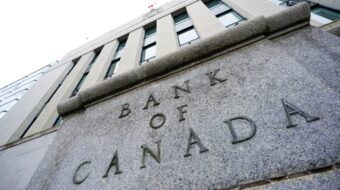U.S. President Barack Obama’s administration on Tuesday unveiled its long-expected reshaped financial rescue plan.
But the plan has so far failed to shore up investors’ confidence as it did not offer enough details on key questions like how toxic assets will be priced and how to get banks to start lending.
NEW RESCUE PLAN
U.S. Treasury Secretary Timothy Geithner introduced the Financial Stability Plan in Washington on Tuesday morning. Different from providing capital to financial institutions in the first half of the Trouble Assets Relief Program (TARP), the new plan includes measures to ‘help restart the flow of credit, clean up and strengthen banks, and provide critical aid for homeowners and for small businesses.’
The government ‘will impose new, higher standards for transparency and accountability,’ Geithner said.
‘The force of government support was not comprehensive or quick enough to withstand the deepening pressure brought on by the weakening economy,’ Geithner said in his speech, referring to why the Obama administration is fundamentally reshaping the program to repair the financial system.
Under the new rescue plan, a Public-Private Investment Fund will be created to provide government capital and financing to leverage private capital to buy up the ‘toxic assets.’ Banks who fail the comprehensive ‘stress tests’ will receive more capital injections from the government.
The ‘stress tests’ will be jointly designed by the Treasury, the Federal Reserve (Fed), the Federal Deposit Insurance Corporation and federal bank regulators to ensure the nation’s largest banks can withstand a worsening economy.
In addition, up to 1 trillion U.S. dollars will be leveraged to kick-start the secondary lending markets.
‘From a macroeconomic standpoint, the key point is that the banks will be healthier tomorrow than they are today as a result of these proposals,’ Ian Shepherdson, U.S. chief economist of High Frequency Economics, wrote in a note to clients.
MARKET RESPONSE
Despite the introduction of the new package, U.S. stocks plunged afterwards. The Dow Jones index dove nearly 382 points, or4.62 percent, to 7,888.88, the biggest decline since Dec. 1.
Broader stock indicators also tumbled. The Standard & Poor’s 500 Stock index dropped 4.91 percent to 827.17, the biggest drop since Obama took office on Jan. 20. The Nasdaq composite index also fell 4.20 percent to 1,524.73.
Meanwhile, light sweet crude for March delivery slid by 2.01 dollars to 37.55 dollars a barrel on the New York Mercantile Exchange. The dollar strengthened against other major currencies, and gold prices also rose.
Financial shares lost ground, as Bank of America Corp. tumbled 19.3 percent to 5.56 dollars a share, Wells Fargo & Co. shares fell 14 percent to 16.35 dollars, and Citigroup plunged 15.19 percent to 3.35 dollars.
A survey by CNBC of more than 32,000 investors showed that 67 percent of them believed that the new proposal would not solve the current financial crisis.  
MISSING DETAILS
Many believe that the new package is not specific enough to deliver a boost to investors’ confidence.
The most important part of the plan is the Public-Private Investment Fund, which will provide government funding to private sectors to purchase bad assets.
However, Geithner gave no details on the structures of the initiative or how the private investors would price the toxic assets.
Many analysts were disappointed to find that the much discussed relaxation of mark-to-market accounting rules was missing in the new proposals.
The idea of ‘stress test’ for banks also raised questions. It is not sure how the assessment will be conducted. And the proposal did not specify on how it would help the housing market.
‘Indeed, we remain firmly of the view that further substantial support will be required as the extended recession drives up losses on assets which have, thus far, performed reasonably well,’ Shepherdson said.
Paul Krugman, winner of the 2008 Nobel Prize for Economics, said the plan is not clear. ‘What is the plan? I really don’t know,’ he wrote in a New York Times column. ‘But maybe it’s a Trojan horse that smuggles the right policy into place.’
LENDING RELUCTANCE
Investors and economists are skeptical how the new proposals will get banks to start lending.
According to the plan, a consumer or business lending facility will be created to leverage up to 1 trillion dollars to jump start the secondary lending markets, a move that aims to get banks to both lend and bring down borrowing costs.
The facility will be conducted through the Fed’s earlier Term Asset-Backed Lending Facility (TALF). The difference lies in that the size is much bigger than the initial 200 billion U.S. dollars.
But it comes face to face with the reality that consumer and business loan demand is collapsing while banks remained reluctant to increase lending.
A conversation between Oppenheimer & Co. banking analyst Meredith Whitney and JP Morgan Chase’s Chief Financial Officer Michael Cavanaugh, revealed last week, proved the concern.
Cavanaugh said that no amount of capital infusions from the government will get JP Morgan to lend more and the bank simply has no appetite for risk in a recession. So it is quite clear that even if JP Morgan accepts more government funds, it’s not going to lend it out soon.
‘Even a healthy bank would be much more cautious in this environment, and it is unrealistic to expect battered, rescued institutions to behave very differently,’ Shepherdson said.
Source:Xinhua











Comments